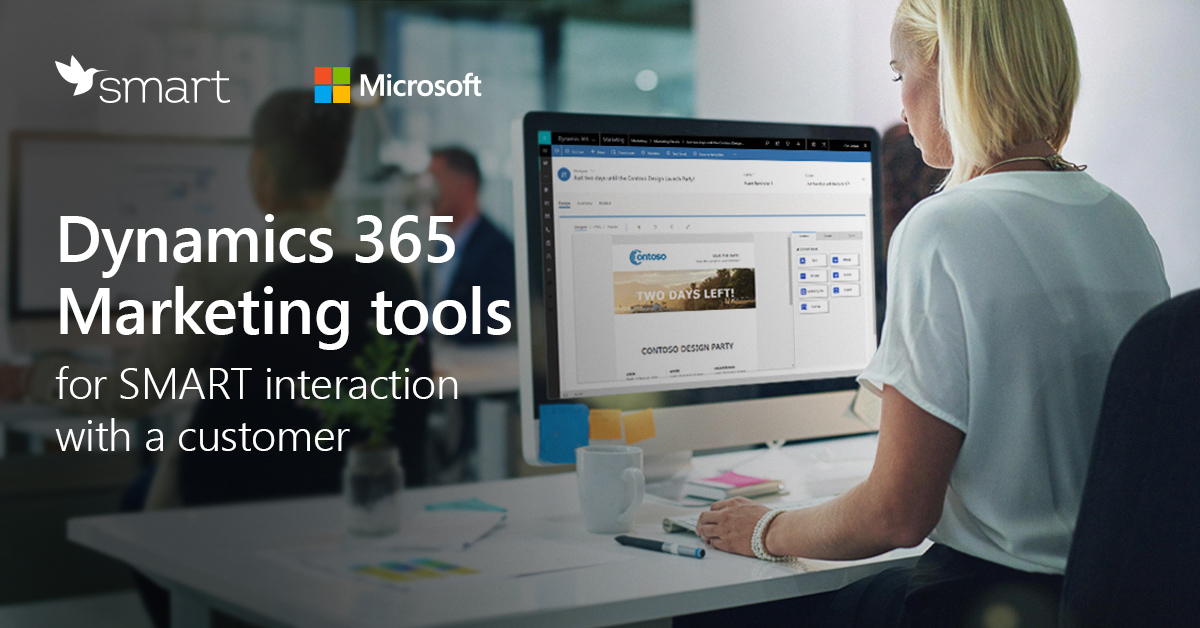
Consumers are going deeper and deeper into digital channels. Virtual shopping, virtual communication, virtual work… This means that marketing managers have no choice but to conquer digital channels, too.
Mass communication and large-scale intuition-based campaigns are being replaced by point communications with the customers, flexible marketing, as well as solutions based on analytics. This is true for both the b2b and b2c spheres.
Past VS Future
Fortunately, with modern platforms like Dynamics 365 Marketing, digitalizing your marketing communications isn’t difficult at all. The number of platform users is growing, which proves that the product really improves marketing communications.
Number of ‘net customers’ of Dynamics 365 Marketing (according to Microsoft)
Using Dynamics 365 Marketing as an example, let’s look at how marketing is evolving and what new approaches to personalization and analytics Microsoft is offering to its customers.
Personalization, or ‘Know Your Customer by Sight’
The email editor in Dynamics 365 Marketing has new capabilities to add dynamic content. You can prepare a single template email, but 100 people will receive 100 different texts. The image below shows such dynamic content: customer name, order number, order status, delivery type, delivery address.
This data is ‘pulled’ from a layer of cloud data called Microsoft Dataverse, which is a container for hosting the data that all Dynamics 365 works with.
Dynamic content in the email
The Customer Insights module is designed to collect all data about a customer in real time: their transactions, behavior and demographic data.
Using artificial intelligence, Customer Insights independently builds segments of future marketing campaigns. For example, these might be customers with a high risk of churn. In manual ‘human’ mode, we may either not notice signals that we are at risk of losing a customer, or we may not be able to process large amounts of data.
Customer segment with high risk of churn
Earlier in Dynamics 365 Marketing you could only work with contacts, while now you can easily interact with leads.
In the previous system version, it was possible to use the following channels: email newsletters, Customer Voice questionnaires, marketing pages (or landing pages). There was also seamless integration with LinkedIn. Additional channels and methods of communication had to be added independently (such Microsoft partners as SMART business are the ones who deal with creation of so-called add-ons: the most popular ones are the possibilities of Viber mailings, SMS and push notifications).
SMS communication is now added to Dynamics 365 Marketing by default.
SMS mailing via Dynamics 365 Marketing
Also, you can now use push notifications on Android or IOS in your customer journey.
Push notifications via Dynamics 365 Marketing
What could be more convenient for a marketing specialist than AI-driven content? When you are writing an email, the system suggests thematic visuals. In the example, we see the words “university” and “student”, so themed photos are pulled from the library. Pictures can also be searched in your own content.
Thematic photos recommended by AI
The email editor has also been improved! The platform evaluates your email and, based on Microsoft’s big data, makes a number of recommendations: for example, how not to get into the spam filter and increase the email readability. You will also see tips on how to enable people with disabilities to read or listen to the email.
Unsolicited advice can also be helpful
Analytics as the only way of measuring results
Analytics and reporting have always been an important part of CRM systems. This is how marketing managers measure both campaign performance and employee performance.
Now the system has real-time analytics for each channel with reconfigured filtering. Out-of-the-box variations for evaluating performance have already been implemented within Dynamics Marketing.
Marketing campaign analytics
You can see how many participants are covered by the campaign, which campaigns are working well and which ones are not, where the difficulties in marketing communications are, whether the goals set “in numbers” are being achieved.
A tree view that enables to find the bottlenecks of your marketing campaign: these are the messages that customers stop their journeys on.
KPIs in real time
Hopefully we’ve been able to convince you that it’s time to start thinking about personalization and analytics for your marketing campaigns. If you decide to do this, but do not know which step to take first, SMART business specialists will be happy to advise you! Contact sales@smart-it.com










